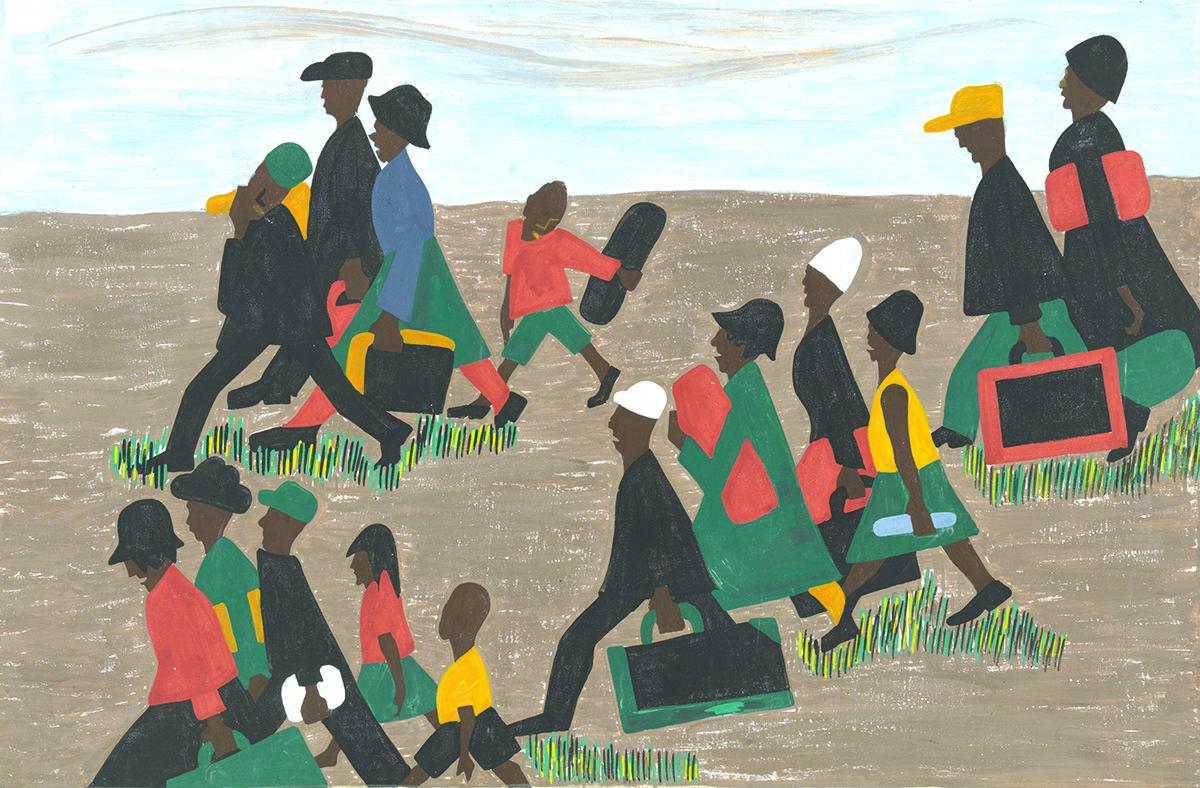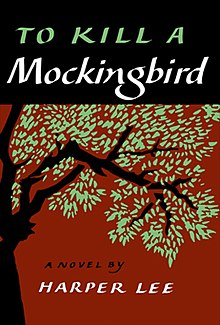Obviously, racial inequality in the U.S. was a real problem for America’s self-image in the early Cold War. Presidents like Dwight D. Eisenhower and John F. Kennedy especially wrestled with striking a balance between presenting the U.S. as a place of racial equality while maintaining the support of their white base. Both presidents were concerned that they might appear too ”radical” if they adopted a too progressive approach. In some circles, an advanced civil rights approach was even labeled as sympathetic toward communism. In the context of the Cold War, both the U.S. and the USSR saw the world as their audience. They were, in effect, competing with one another for influence. Third-world countries (many of which were racially diverse) found themselves torn between allying themselves with either the soviet union or the U.S. to help persuade many of these third world countries, propaganda from the soviet union or the U.S. was used to make them selves appear racial diverse and accepting. For example, One propaganda poster from 1948 depicts an African American male tied up after being beaten. In the background is the Statue of Liberty and at the bottom the caption reads: ”Under capitalism”. Even stamps were used for propaganda purposes. Another propaganda image depicted joyful Soviet citizens of all races and backgrounds linking arms and marching together underneath the hammer and sickle. Yet another poster from 1932 reads: ”Workers from all countries and oppressed colonies raise the banner of [Soviet founder] Lenin.” In these posters, the Soviet Union sought to present itself as a bastion of racial harmony. 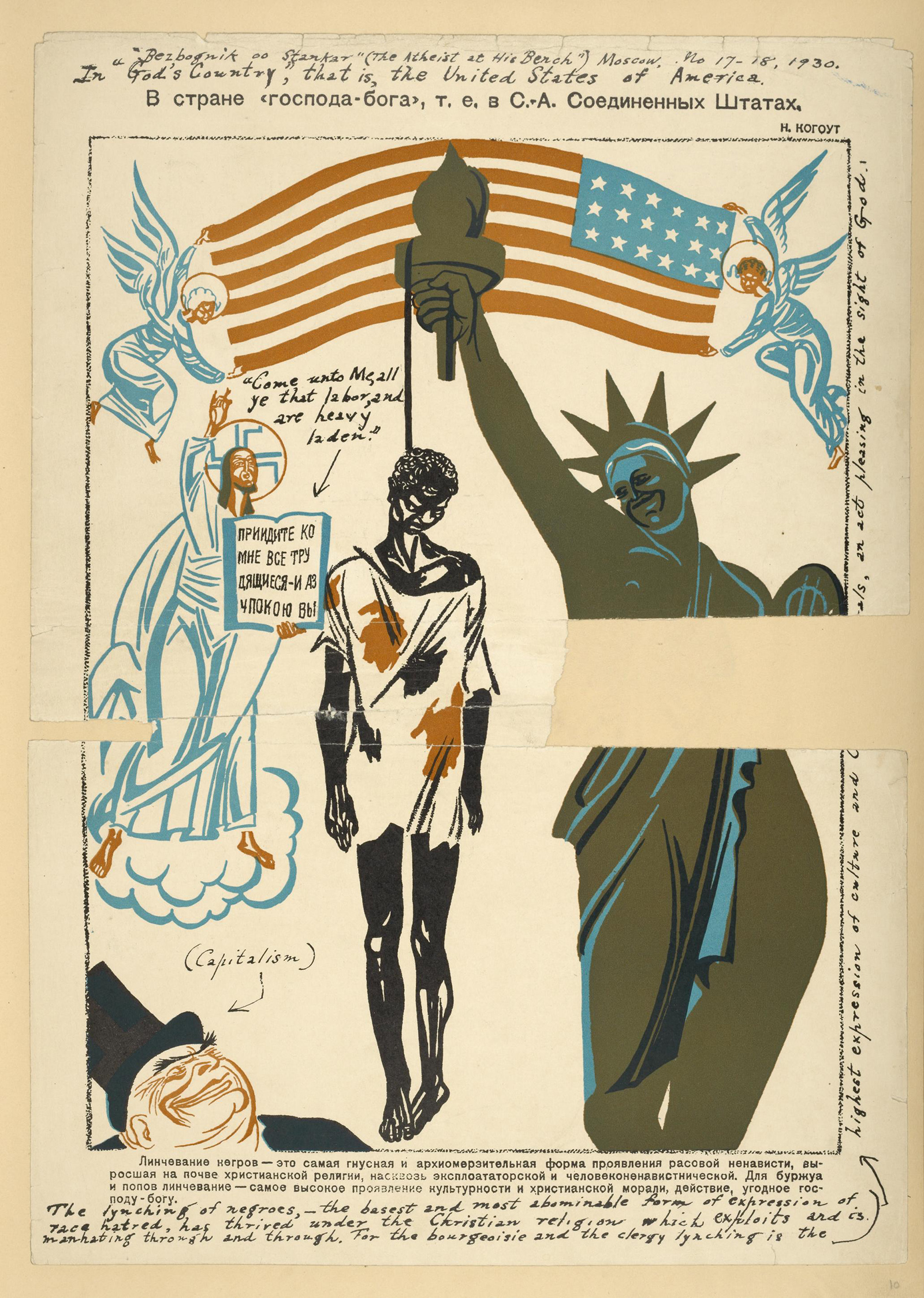
Author: Bryce Danovskis
Racism during Barack Obama’s presidency
Barack Obama’s watershed 2008 election and the presidency that followed profoundly altered the aesthetics of American democracy, transforming the Founding Fathers’ narrow vision of politics and citizenship into something more expansive and more elegant. The American presidency suddenly looked very different, and for a moment America felt different, too. The Obama victory helped fulfill one of the great ambitions of the civil rights struggle by showcasing the ability of extraordinarily talented black Americans to lead and excel in all facets of American life. First lady Michelle Obama, and daughters Sasha and Malia, extended this re imagining of black American life by providing a conspicuous vision of a healthy, loving and thriving African American family that defies still-prevalent racist stereotypes. But some interpreted Obama’s triumph as much more.
The victory was heralded as the arrival of a “post-racial” America, one in which the nation’s original sin of racial slavery and post-Reconstruction Jim Crow discrimination had finally been absolved by the election of a black man as commander in chief. For a while, the nation basked in a racially harmonious afterglow.
A black president would influence generations of young children to embrace a new vision of American citizenship. The “Obama Coalition” of African American, white, Latino, Asian American and Native American voters had helped usher in an era in which institutional racism and pervasive inequality would fade as Americans embraced the nation’s multicultural promise. Seven years later, such profound optimism seems misplaced. Almost immediately, the Obama presidency unleashed racial furies that have only multiplied over time. From the tea party’s racially tinged attacks on the president’s policy agenda to the “birther” movement’s more overtly racist fantasies asserting that Obama was not even an American citizen, the national racial climate grew more, and not less, fraught. If racial conflict, in the form of birthers, tea partyers and gnawing resentments, implicitly shadowed Obama’s first term, it erupted into open warfare during much of his second. it shows us as a country we still have much more to do to gain true equality in America
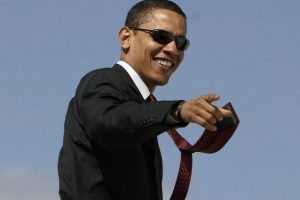
Returning home
Despite their distinguished wartime record, the Tuskegee Airmen returned to an America unwilling to recognize their contributions. Racism and segregation continued to have a stranglehold on the country. Instead of being greeted with a hero’s welcome, the Tuskegee Airmen were segregated as soon as they disembarked the ships that brought them home. German prisoners of war were treated better than black Americans. Its absolute appalling to think Nazi soldiers that killed american and ally troops were treated better then African American soldiers that sacrificed so much for their country. It would be decades before their war efforts were acknowledged or even widely known, and it could be said that even today many people do not know about the remarkable achievements of the Tuskegee Airmen. Misinformation, or lack of any factual information at all, is rampant. The Tuskegee Airmen continued their fight for social justice, alongside all black Americans, into the 1960’s and beyond, but their performance in World War II contributed significantly to the desegregation of the U.S. Armed Forces. On July 26, 1948, President Harry S. Truman signed Executive Order 9981 that ended segregation in the military and set the stage for equal treatment regardless of race. Many Tuskegee Airmen went on to have distinguished military and civilian careers. Teachers, doctors, lawyers, generals, congressmen, authors, Korean and Vietnam war heroes, and many more make up a snapshot of these fine Americans. They continue to be regarded for opening the doors to opportunity for minorities that would come after them.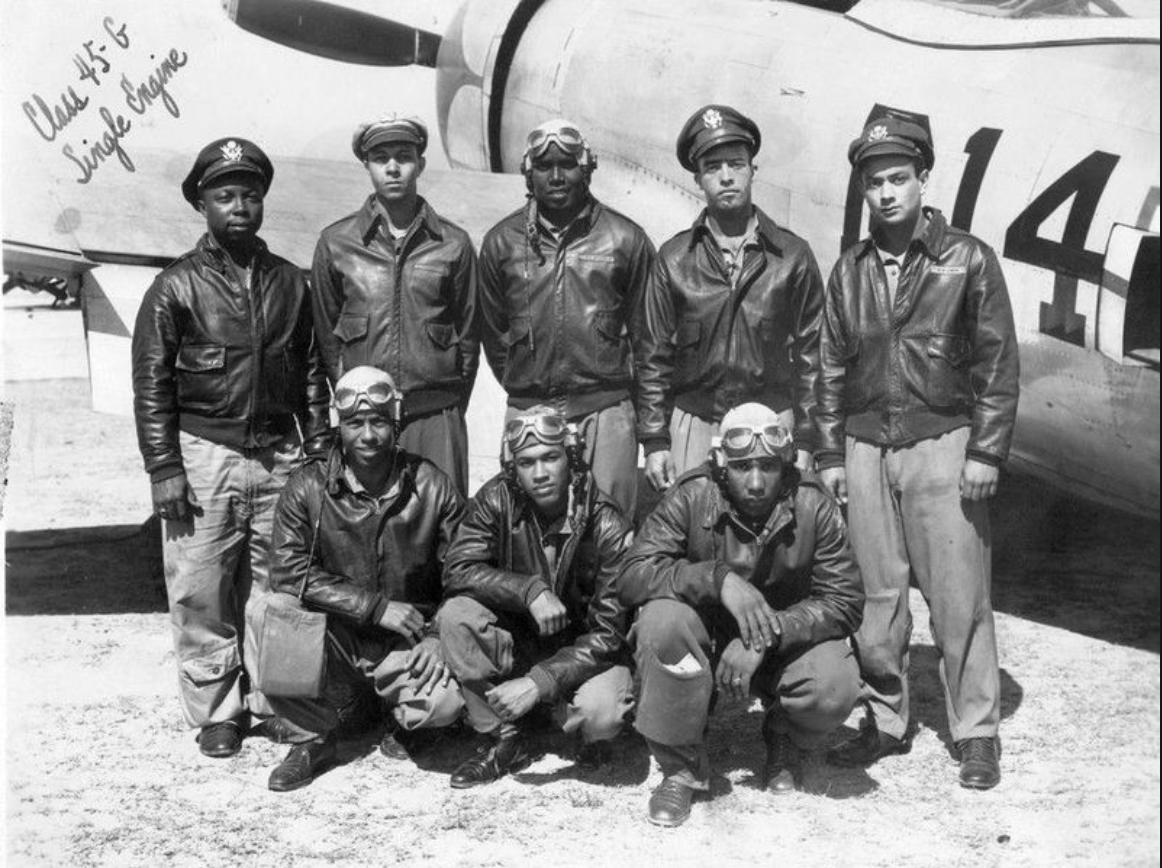
The power of media with the double V campaign
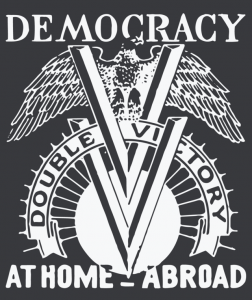 February 7, 1942, was a day that changed America. Segregation and discrimination had reached a point that was no longer tolerable, and according to the Pittsburgh Courier, it was time for a campaign. The “Double V Campaign,” as it was called, stood for two victories for black Americans: a victory at home and a victory abroad.
February 7, 1942, was a day that changed America. Segregation and discrimination had reached a point that was no longer tolerable, and according to the Pittsburgh Courier, it was time for a campaign. The “Double V Campaign,” as it was called, stood for two victories for black Americans: a victory at home and a victory abroad.
This campaign was orchestrated by the Pittsburgh Courier, a weekly black newspaper that helped influence public opinion among black Americans. According to the Courier‘s February 14th headline, “The Courier’s Double ‘V’ for a double victory campaign gets country-wide support.” This support showed that black America was tired of being oppressed and ready for change. The Double V campaign helped tremendously the plight of black Americans. Blacks everywhere were discriminated against based on their color, and the armed forces at this time was no exception. If blacks were allowed entrance into the army, they were only given menial jobs such as cooks or stewards. The Double V campaign called for integration and for the possibility of fighting for freedom everywhere. The Courierwent on to say in its’ February 14th article, “We, as colored Americans are determined to protect our country, our form of government and the freedoms which we cherish for ourselves and the rest of the world, therefore we have adopted the Double ‘V’ war cry—victory over our enemies at home and victory over our enemies on the battlefields abroad. Thus in our fight for freedom we wage a two-pronged attack against our enslavers at home and those abroad who will enslave us. WE HAVE A STAKE IN THIS FIGHT…WE ARE AMERICANS, TOO!” Not only did the campaign gather blacks together in support of racial equality, but afforded them the opportunity to feel part of a bigger struggle for freedom everywhere. The shared struggles of black America were also felt by black service men in the armed forces. According to Lawrence P. Scott, a black airman in the 99th, and an eventual Tuskegee Airman, “every man in the 99th was aware that the success of the 99th would impact the status of blacks in the Army Air Force and the army as a whole and that each man performed his job as if the race depended on him.” The Pittsburgh Courier helped spread the word and bring African Americans together and fight for their rights after everything they have sacrificed to serve their country and be equal on the home-front.
